Kidlat Tahimik honors ‘indio-genius’ Rizal in Baguio exhibit
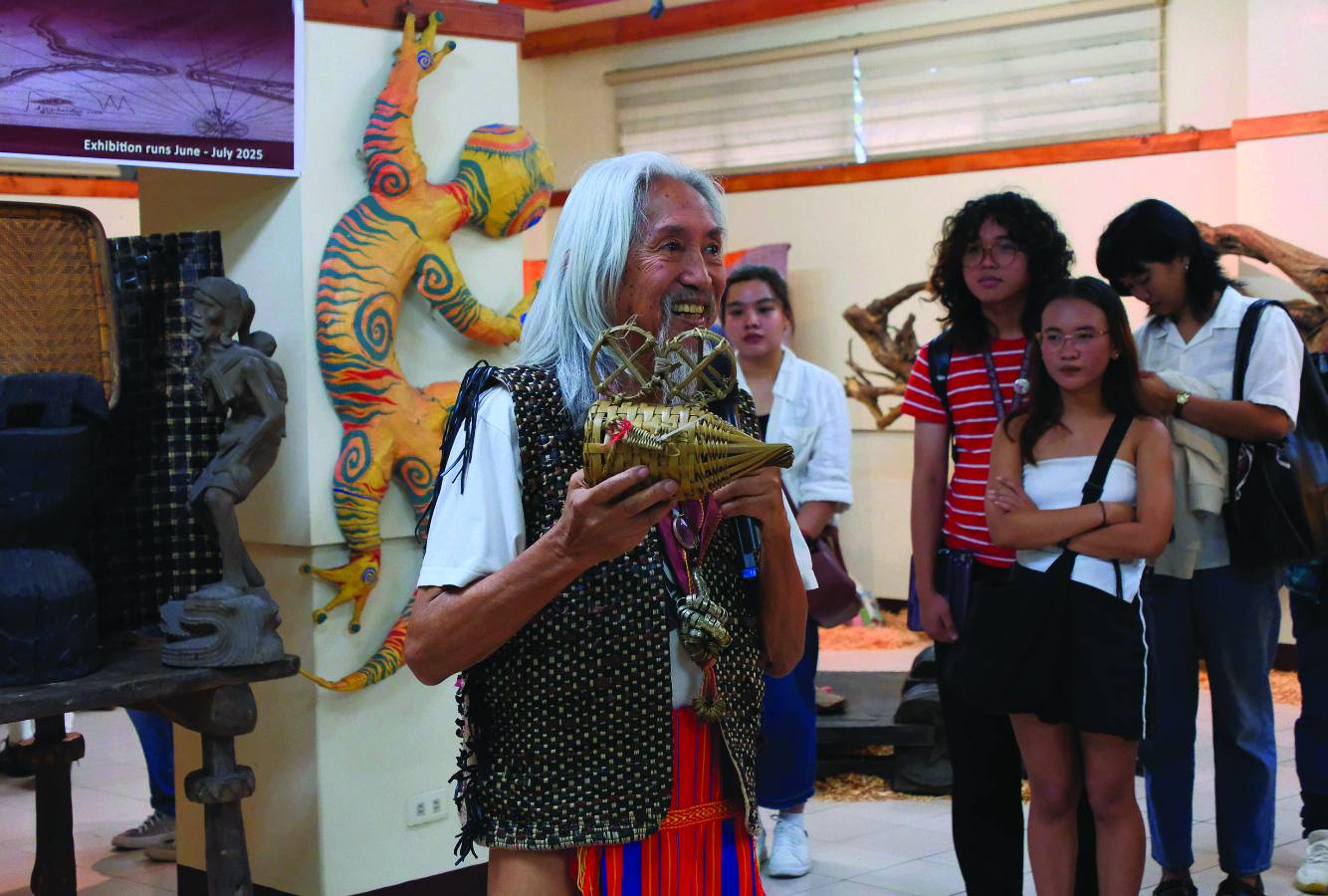
BAGUIO CITY—Leading his made-up song “Happy Orbit, Pepe,” instead of the usual “Happy Birthday” tune, National Artist Kidlat Tahimik honored “indio-genius” Jose Rizal on his 164th birth anniversary with a June 19 exhibit at the Baguio Museum.
Rizal has been a prominent fixture in the filmmaker’s alternative calendar of outstanding Filipinos which the 82-year-old Kidlat (Eric de Guia) periodically shares with friends and colleagues every year to champion the celebration of Filipino-centric milestones.
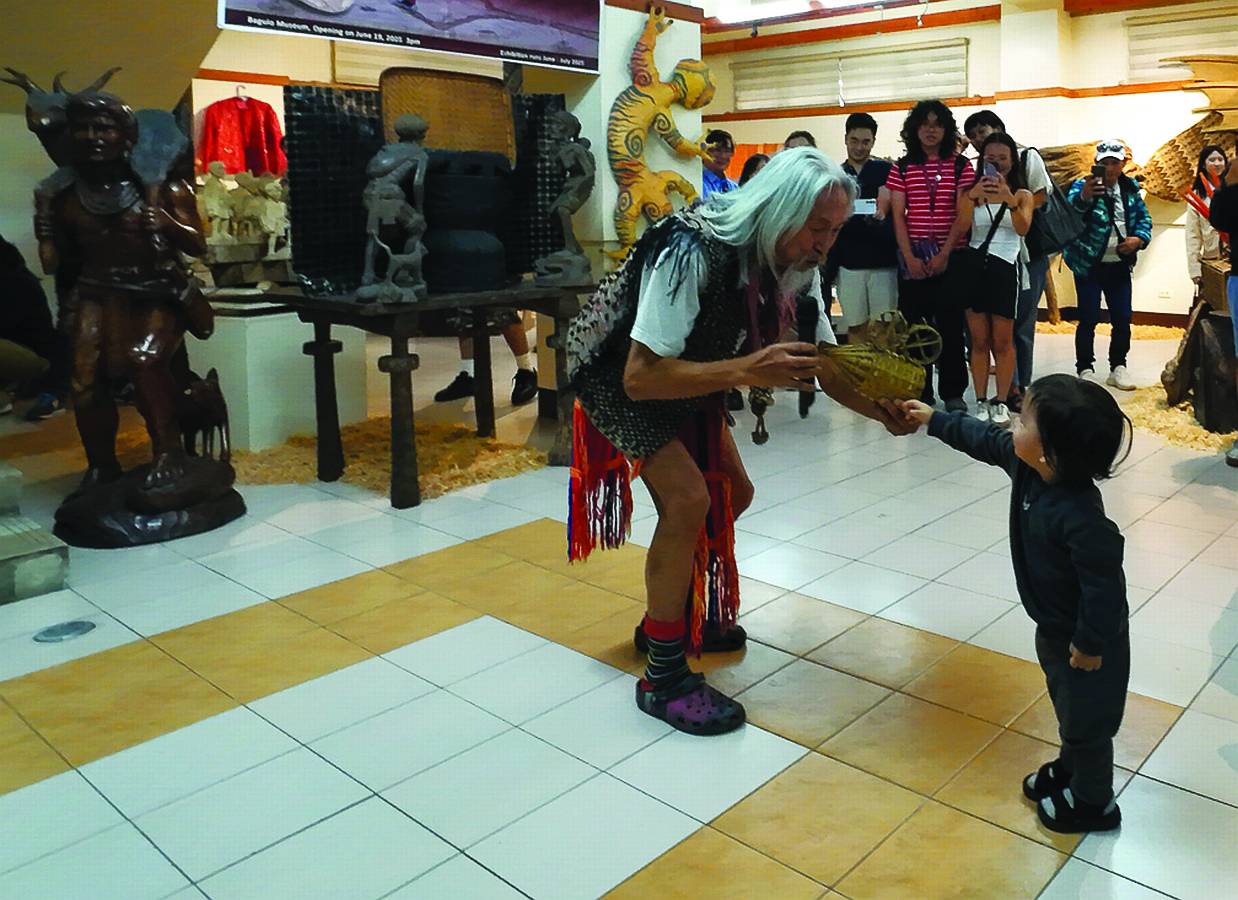
For instance, he sent out a Viber list of his “history memorials” on the last day of May to remind people about the Battle of Alapan on May 28, 1898, where the first Philippine flag was unfurled “14 days before the Kalayaan ng Pilipinas (the country’s declaration of independence) on June 12.” Kidlat said this battle in Imus, Cavite, was the Philippine Revolution’s first military victory over Spain and should not be forgotten.
He said May was also the month to herald the “Mga Bayani ng Mayo” (Patriots of May) like Iglesia Filipina Independiente founder and activist Catholic priest Gregorio Aglipay (born May 5); Gregoria de Jesus, wife of Katipunan founder Andres Bonifacio (born May 9); and his fellow national artists—the late writer Nick Joaquin (born May 4) and the late painter Fernando Amorsolo (born May 30). Kidlat’s latest calendar entry also includes actress Nora Aunor (May 18), also a national artist who died on April 16.
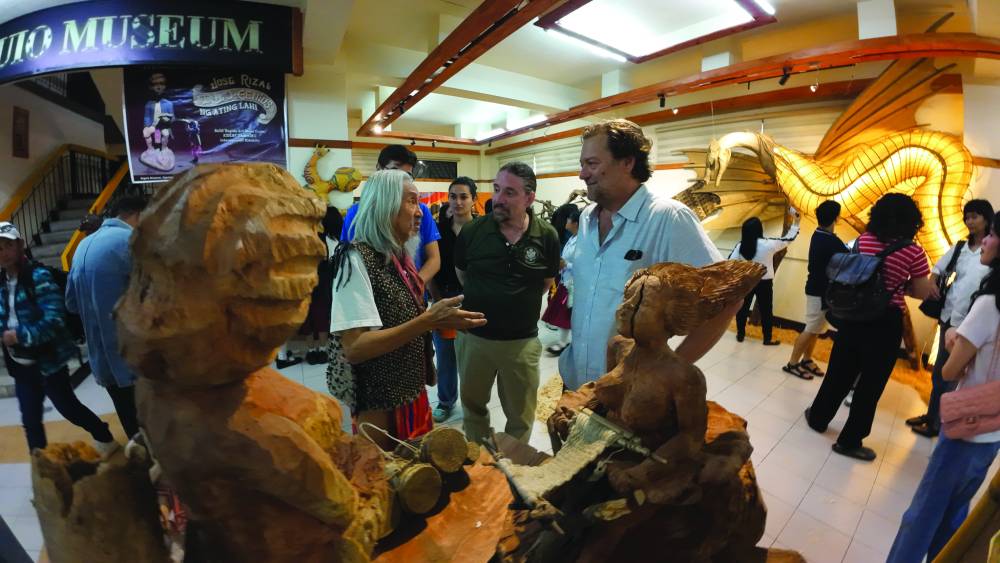
Polymath
He would never forget to remind friends about the Jan. 6, 1812, birth anniversary of revolutionary icon Tandang Sora (Melchora Aquino) and would often surprise colleagues with the fast fact that April 27, 1521, was the day warriors led by Mactan chieftain Lapulapu defeated and killed Portuguese explorer Ferdinand Magellan, the leader of the Spanish fleet that arrived in the Philippines. Kidlat always says people remember Lapulapu because of musician and “our great historian, Yoyoy Villame.”
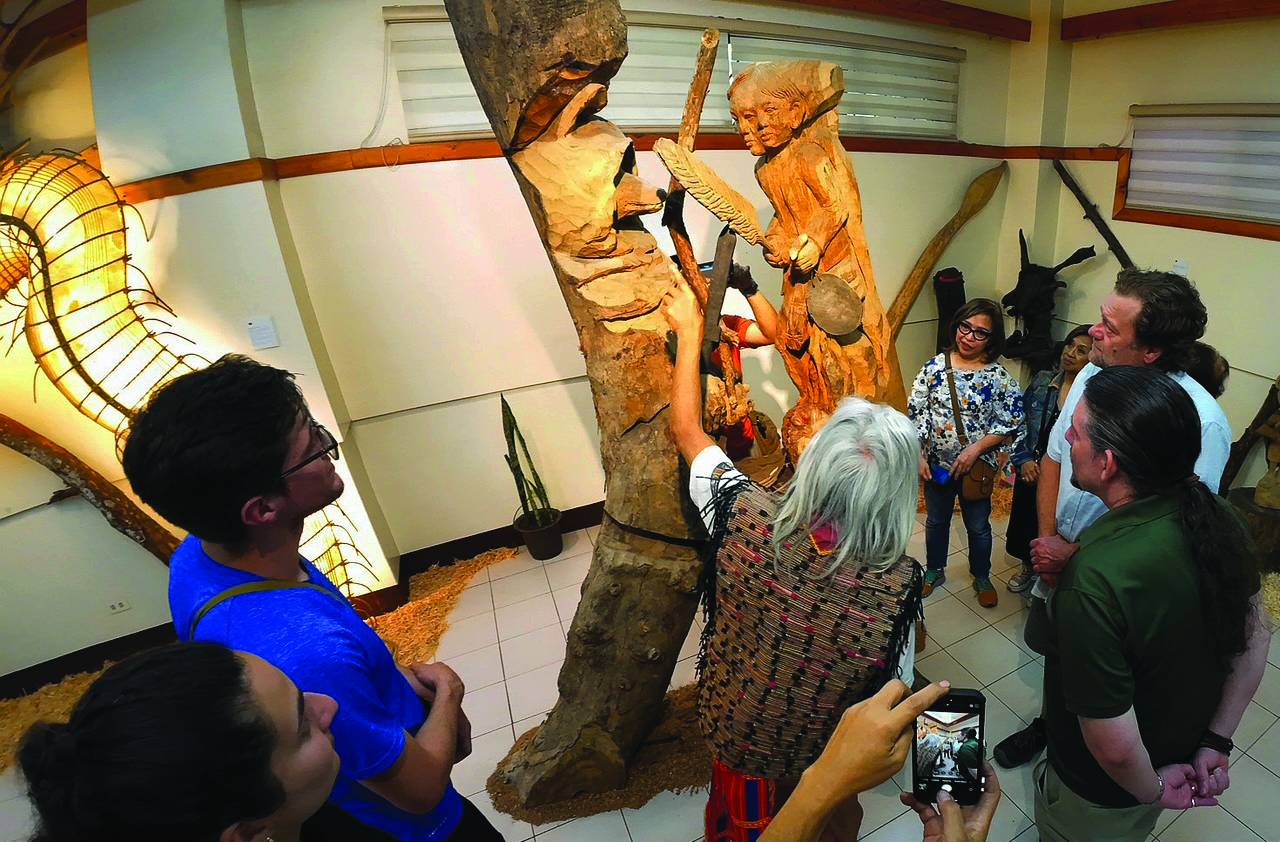
But it is Rizal to whom he gravitates. Rizal, Kidlat said, was a polymath not because he completed Western education and became an eye doctor by mastering Western medicine, but because “beneath his winter coat he wore his bahag (loincloth or g-string).”
Kidlat said Rizal was both an “indio” (a Spanish colonial slur for Filipinos) and a genius, to explain the exhibit title, “Maligayang Kaarawan Jose Rizal Indio-Genius ng Ating Lahi.”
But the term “indio-genius” was coined because of a “cosmic” happenstance.
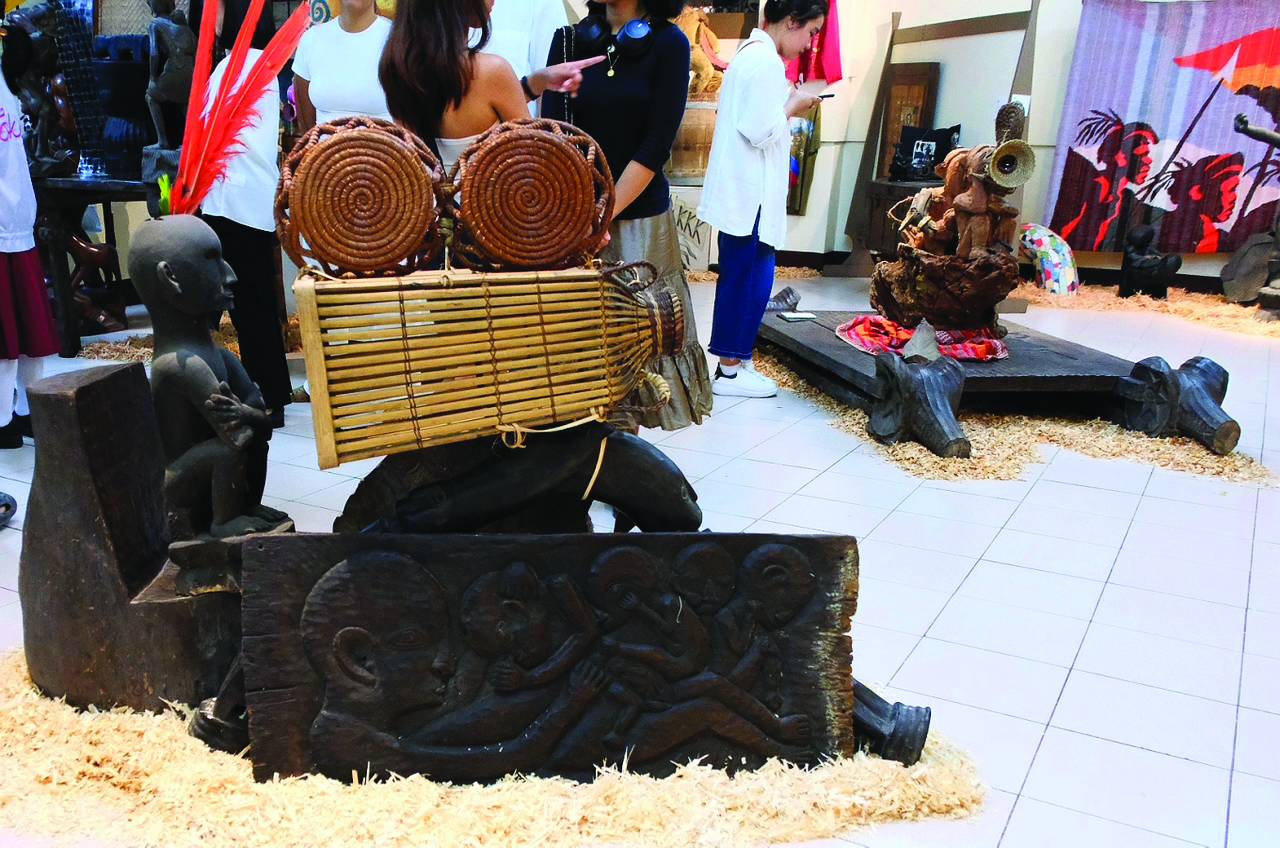
“My mentor is an Ifugao elder—Lopez Nauyac (who passed away last year). He always mispronounced the word ‘indigenous.’ He would say, ‘the indio-genius people are being laughed at by the sophisticated people of Manila,’” Kidlat said.
He began using the term when he taught at the University of the Philippines Baguio, because Nauyac managed to incorporate “genius” with the indigenous peoples and fit with his directive for students to “use our indio-genius stories.”
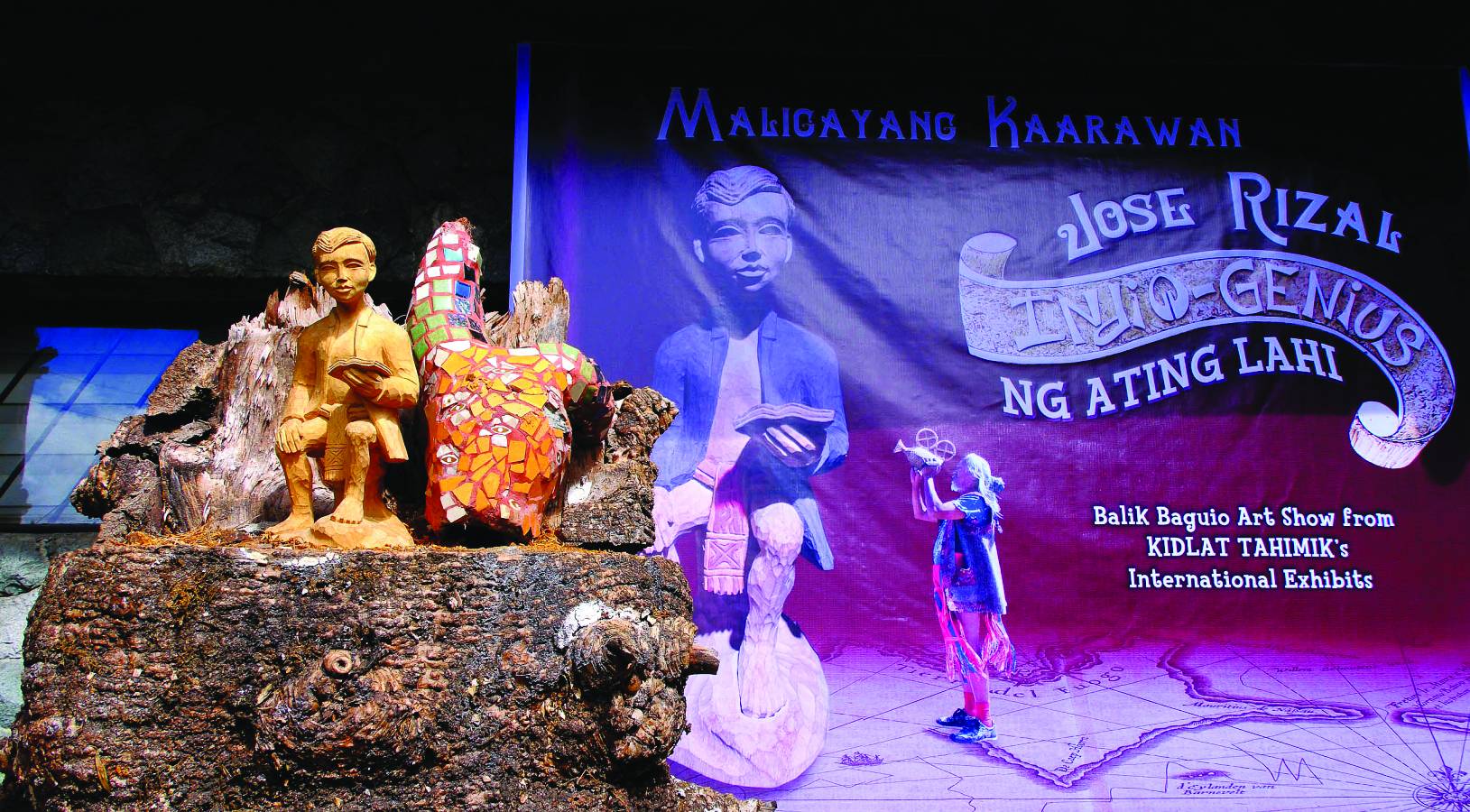
“What we learn from our foreign mentors can be combined with the knowledge passed down by indigenous peoples who have a strong connection to nature and that is why the rice terraces of Ifugao survived 3,000 years,” he told an audience that included Baguio City National High School students, UP Baguio Fine Arts students and visitors from the United States Embassy.
“Writer Carmen Guerrero Nakpil used to say we Filipinos have lived two centuries in a convent and 50 years of Hollywood … that’s a pretty long colonial experience,” he told the students.

Composite artwork
According to Kidlat, the exhibit features a composite of Rizal artwork that were used in different installations to tell “different stories,” and were not meant to be anticolonial but an appreciation of everything Filipino.
For instance, a statue of what appears to be Rizal leaning back during his execution atop a barrel was placed at the corner of the museum stockroom, surrounded by the national hero’s portraits. At the center of this tableau was a table filled with smaller Rizal statues.
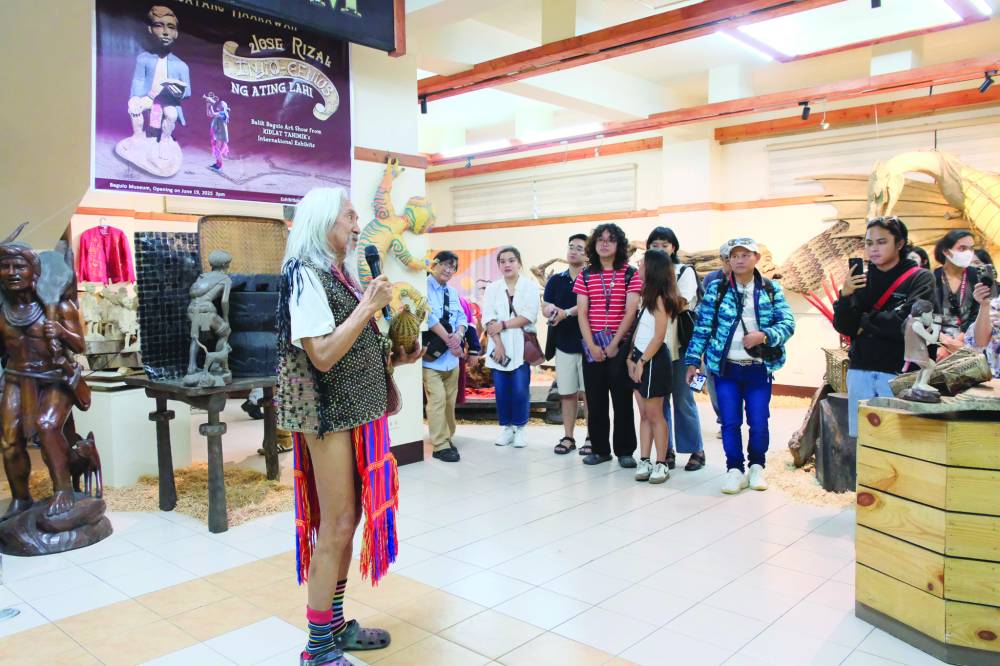
Farther down the room stands a huge sculpture of Rizal whose face blurs and transforms into his “Noli Me Tangere” protagonist Crisostomo Ibarra. The Rizal statue locks eyes with a hooded wolf which represents his novel’s villain, Padre Damaso, Kidlat explained to American documentarian Brandon Hull who attended the exhibit. These images were carved out of narra trunks by Ifugao woodcarver Dehon Taguyungon.
“I warn everybody, don’t sing ‘Happy Birthday’ to Kuya Pepe. The lyrics are owned by [a film company] and we may end up paying royalties,” Kidlat joked. He instead proposed celebrating the 164 times the earth revolved in orbit around the sun.

Kidlat said the June 19 exhibit was not planned. He had been touring a massive exhibit in Europe and across the country to showcase “our [Filipino] stories,” and some pieces of art that were shipped back to Baguio ended up at the Baguio Museum.
What he describes as his “Balik Baguio Art Show” will run until July.





















